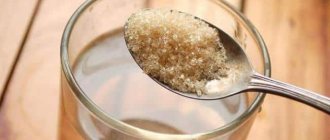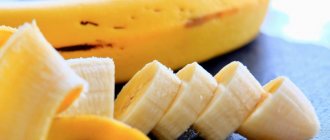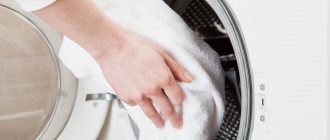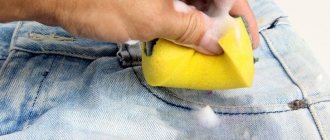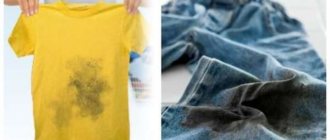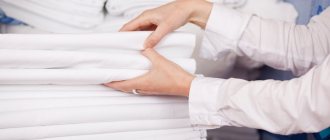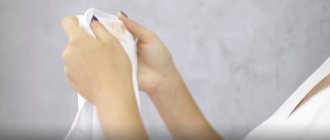With the onset of summer, the garden plays with different colors thanks to the rich harvest of berries: raspberries, honeysuckle, strawberries and currants. Each type is rich in vitamins, especially currants. This is the berry that children and adults like. Often, picking or eating currants can leave unpleasant consequences in the form of stains not only on clothes, but also on the sofa or carpet. Your detergent or laundry detergent cannot always cope with such dyes, so it will be useful for every housewife to learn how to remove currant stains.
What is important to remember when removing stains
To get rid of blackcurrant stains quickly and efficiently, you must follow a number of rules:
- The fresher the stain, the easier it is to remove.
- If it is possible to soak the stain, do so.
- Do not use soap or powder.
- Before using the cleaning product, test it on a small piece of soiled material.
Do not put off washing your favorite item until tomorrow - you must not allow the dirt to become firmly embedded in the fabric.
Do not use soap or powder
When washing blackcurrant stains with soap or powder, you can harm the product. The natural dye will be firmly embedded in the fibers of the material, entering into a chemical reaction with cleaning agents. The result will be the opposite effect.
Reaction test
Many products contain aggressive components that can disturb the color and structure of the fabric.
Before you start using them, be sure to do a quick test to determine the reaction between the material and the cleaning agent. If the color of the product has not changed, the fibers have not become thinner, then you can begin removing stains.
Timeliness
Dealing with old stains is much more difficult. The stains are soaked additionally, and the impact on the fabric has to be stronger. Fresh stains are quickly removed without streaks using folk remedies. The faster you start washing the blot, the better the result will be.
See also
How to wash viscose in a washing machine and by hand so that the product does not shrink
Taking into account the nature of pollution
The choice of cleaning method depends on the type of contamination. The stains may be small in size, but highly concentrated, or, conversely, currant compote diluted with water has gotten on the clothes.
Durability
Stains from juice or crushed berries are the most persistent. They need to be soaked before the main cleaning. Blots from compote are often removed in a regular wash with the addition of a stain remover.
Fabric type
The choice of cleaning agent depends on the type of fabric where the currants got caught. Delicate materials (silk, wool) should not be exposed to high temperatures or boiled. The stain remover selected is gentle, without chlorine and other aggressive components.
Clothes color
For colored fabrics, pre-soak in yogurt is used; boiling water should not be used. From folk remedies, hydrogen peroxide is used for snow-white things; it is better to clean stains from colored fabrics with glycerin. You cannot remove stains from white and red items in the same basin at the same time - stains may remain on snow-white items.
How rust appears on clothes
The formation of rust on fabric is an unpleasant sight; this type of contamination is difficult to remove with conventional washing products. These types of contamination on clothing occur for the following reasons:
- drying things on metal devices of the heating system;
- loading clothes for washing without first removing metal objects from pockets;
- contact of wet things with metal objects;
- the presence of metal parts on things;
- contact with metal objects (swings, benches).
Rust stains appear very quickly, especially on light-colored items. The presence of brown stains can make the item unwearable if the problem is not corrected in a timely manner. The result of using stain removers is achieved depending on the size of the problem and compliance with the rules for using the chemical.
Proven folk methods
With the help of improvised means, you can cope with even complex, persistent stains. Surely, every housewife will have in her arsenal: salt, hydrogen peroxide, vinegar or ammonia.
Cool boiling water
This product is suitable for removing fresh stains from white items. The product is stretched over a basin with the front side of the stain facing up. Boiling water is poured onto the blot slowly in a thin stream. The dye has not yet become deeply embedded in the fibers; the blot is washed off with plain water. After cleaning, the item must be washed.
Important! Do not use boiling water for colored items.
Kefir or yogurt
These dairy products have a gentle effect on all types of fabrics: silk, wool, colored items. The product is soaked in kefir or yogurt without diluting with water for several hours, then rinsed with cold water and washed in normal washing mode.
Salt
To get rid of currant stains, table salt is often used. It is necessary to make a solution with a high concentration of salt: stir 3 heaped tablespoons in 0.5 cups of water. Apply the product directly to the stain with a cotton pad. Rub the blot from the edges to the center, soaking the dirt. After the stain has disappeared, the item is rinsed and washed in the standard mode.
See also
The best ways to bleach tulle at home quickly and effectively
Citric acid or juice
A gentle method suitable for delicate fabrics. The juice of one lemon or diluted citric acid is applied to the stain and left for 30 minutes. Then rinse. If purple stains remain, repeat the treatment.
Table vinegar
Every housewife has regular table vinegar in her house. For blackcurrant stains, use a mixture of vinegar and citric acid. Apply the product to the stain with a cotton pad and gently rub the stain.
If the stained item is made of colored material, do not forget to do a reaction test on a small piece of the item.
Glycerol
A mild product suitable for removing stains from delicate and colored surfaces. Glycerin is mixed with egg yolk and foamed generously. The product is applied directly to the dirt and rubbed into the stain with an old toothbrush. After 2 hours, the fabric can be rinsed and washed.
Hydrogen peroxide
The product is dissolved in water in a ratio of 1:10 and soiled clothes are soaked in it. If the test for interaction with the fabric of the concentrated substance is good, then you can apply peroxide to the stain without diluting. Best used for white items.
Ammonia
Effective for fresh stains. Soak soiled items in a solution of water and ammonia in a 1:1 ratio. The clothes are then washed using normal washing.
How to remove currant stains from furniture and carpets
If stains from your favorite berry get on your sofa or carpet, you should take a number of specific actions that will be effective in combating the resulting contamination:
- The crushed currants need to be collected. Then you will need paper towels or napkins, with which you need to absorb as much juice as possible.
- You can save time on removing contamination and cover the stains with finely ground table salt. Due to the fact that table salt has high adsorption properties, most of the juice will be collected in its crystals. Then you need to vacuum the area where the salt was applied and begin removing the stain.
- Regular dishwashing detergent may come in handy. Dilute 15 ml of the product with half a liter of warm water. Then use a sponge and wash the area of contamination with the resulting soap solution.
- Using a clean napkin or paper towel, remove any remaining soap solution from the surface to be treated.
- Take 15 ml of ammonia and mix it with two glasses of water. Apply the solution to the contaminated surface. Use a paper towel to remove any remaining solution. It is important to carry out the procedure in a ventilated area. A mandatory requirement is the use of rubber gloves.
To prevent summer days from being ruined by currant stains on your favorite clothes, sofa or carpet, it is important to learn how to quickly and effectively get rid of them.
Stain removers
Modern professional household chemicals will help you quickly deal with stains. Manufacturers claim 100% cleaning results with minimal harm to the fabric.
Vanish
A popular oxygen stain remover for T-shirts and other everyday clothing. Available in powder form, which must be diluted with water. It is gentle on fabric, but not suitable for silk and leather. The product is applied to the stain for about 20 minutes, then the item is rinsed and washed in a standard wash cycle.
Amway
A proven product in spray form, easy to use. It has a high price, but is quite economical in consumption. Can remove old blackcurrant stains.
See also
TOP 15 products on how and what to remove strawberry stains from white and colored clothes
Frau Schmidt
An excellent product for children's things, does not cause allergic reactions, does not contain components hazardous to health. Effective for fresh stains, it copes worse with strong old stains.
Sarma
Available in powder form, it is affordable and copes with both fresh and old stubborn stains.
Eared nanny
The stain remover, suitable for children's clothes, washes off well, does not corrode colored fabrics, does not leave streaks, is non-toxic, and does not cause allergic reactions.
It comes in the form of a gel, which is applied to the stain and added when washing in the washing machine.
Home dry cleaning arsenal
Timely removal of stains extends the life of your favorite clothes. If cleaning is done at home, then you need to have in stock:
- nylon brushes (for coarse fabrics) and hair brushes (used for fine fabrics);
- foam sponges, tampons or cotton wool;
- porcelain or metal spatulas (spatulas) to remove the top dried crusts;
- sticks, droppers or pipettes for applying stain remover to the contaminated area.
The products used may be hazardous to health. Therefore, all work should be performed with thin gloves.
This will protect the skin of your hands from chemicals and prevent allergic reactions to detergents.
Summer is the time for fruits and ice cream. They are tasty and... easily soiled. Healthnews gives tips on how to remove stains.
Features of cleaning various materials
Delicate items need careful cleaning. Rough materials can withstand products with active ingredients.
The choice of stain remover depends on the type of material on which the currants have come into contact.
Linen and cotton
Durable fabrics. When removing stains, you can use strong detergents and boiling water. The material can be rubbed. Cleaning should begin with a reaction test to the active substance.
Wool
Delicate material, but dirt does not eat into it much. Cleaning should begin with pre-soaking. Folk remedies in the form of yogurt and kefir will do an excellent job. Chemical stain removers must be selected according to the recommendations on the packaging.
Silk
Do not use boiling water or professional stain removers containing chlorine. A reaction test with a cleaning agent is required. Among folk remedies, it is preferable to use glycerin.
Snow-white cotton tablecloth
Blackcurrant stains often end up on the tablecloth; you can return the item to its original appearance by boiling it in bleach or using folk recipes:
- Treating stains with citric acid and table vinegar.
- For fresh stains - ammonia or hydrogen peroxide.
After cleaning, the tablecloth is rinsed and washed. Do not rub fresh stains with soap or powder.
Useful tips and tricks
To ensure that the process of removing stains from fabric does not cause difficulties, you must adhere to the following recommendations:
- stains must be removed immediately after they form; old stains are much more difficult to respond to stain removers;
- It is necessary to apply the composition to remove dirt from the inside, this way you can reduce the risk of streaks and color fading;
- before starting to apply the stain cleaning composition, you should first prepare your clothes by clearing them of dust and additional accessories that may be damaged during contact with the rust remover;
- rust must first be removed using stain removers, and only then washed with water;
- observe protection methods for exposed areas of the body and mucous membranes;
- promptly remove metal objects before contact with water;
- before starting the procedure, you must study the information on the label;
- After using the stain remover, items are washed separately;
- You can remove rust from shirts and other thin materials using lemon juice if the fabric has recently deteriorated.
Following simple recommendations will extend the life of your clothing and restore the freshness and brightness of the fabric. Contaminants that occupy a large area on clothing are washed in several procedures, depending on the age of the contamination.
Improper drying of clothes very often provokes the appearance of stains, such as rust stains. Special preparations that can be purchased at any household chemical store can be used as stain removers. However, methods using improvised means are often used to eliminate contamination without harm to fabric fibers. Such methods are highly effective and do not require financial resources.
Share link:
Old stains
An old stain is difficult to remove, be it walnut juice or a stain from a watermelon. At home, you can use ethyl alcohol, undiluted. It helps get rid of traces of sea buckthorn, strawberries, blackberries, and raspberries. The best way to neutralize pigments is hydrogen peroxide. They start with a weak solution, when it doesn’t help, mix it equally with water and even use it in its pure form if the fabric has no pattern. You can wash cranberry, sea buckthorn and peach juice from white cotton fabric by boiling it in water with hydrogen peroxide.
Dandelion and Adam's apple juices, often used in folk medicine, are highly corrosive. How to wash off maclura and dandelion juice? A weak solution of potassium permanganate helps remove traces of dandelions from clothes. After soaking the product in it, washing with powder is required.
How to wash maclura juice? This is one of the most difficult contaminants. But if you don’t delay washing, then alcohol and dimexide, used alternately, can help. It is almost impossible to wash off an old print. As a last resort, you can use turpentine or kerosene, but only on dense and natural fabrics.
Traces from tangerines, strawberries, blackberries and chokeberries are easier to remove. This mixture works well: combine 2 tsp. hydrogen peroxide, 1 tsp. dish gel and ½ bleach. Treat the stain and wash off after 25 minutes. The same remedy will help with yellow marks from aloe and sea buckthorn.
From citrus
Not all citrus fruits leave stains; moreover, some fruits even help to cope with traces of berries, take, for example, lemon juice. But old orange or tangerine stains can be corrosive.
Vinegar and baking soda will help remove stale stains from orange juice. The components are mixed equally and applied to the stain during the reaction process. Glycerin is suitable for delicate fabrics. The orange trace is treated with it and left for 2 hours.
From pomegranate or grapes
Now let's find out how to remove stains from pomegranate or grape juice. Acidic products - lemon juice, vinegar and even yogurt - can cope with dark prints. A mixture of vinegar and washing powder diluted in water helps against black grapes. For 1 liter of water take 1 tbsp. l. both components. The product is soaked in this product for an hour. This method can be used to wash red wine and grape juice.
We choose a method depending on the type of fabric
Let's consider methods using improvised means that can easily be found in every home, even in the country.
Linen and/or cotton products
You will need citric acid or vinegar. Dilute with water in equal proportions and boil. If you use vinegar, add it to the already prepared boiling water. Stretch the item with the stain over the tub or container. Carefully pour the resulting boiling solution onto the stain. The stain will become much lighter.
Woolen items
Pour the laundry soap into a container. Use a grater for convenience. Add a little warm water and stir until foam forms. Treat the stain with this soap solution. Next, wash by hand. Leave it for a while, and then wash it in the machine on the “wool” cycle.
For delicate items, you can use glycerin. It is sold at the pharmacy. Dilute it with water 50/50. Treat the stain thoroughly and leave for 2 hours. Wash as normal, adding gentle bleach.
In addition to the methods discussed above, there are also grandmother’s methods that have proven their effectiveness over the years.
It is important to know!
Before you start removing currant stains, you should pay attention to several points:
- in order not to spoil the product, it is worth conducting a test for the compatibility of the fabric with the cleaning agent; this should be done in a place where it will not be visible;
- Under no circumstances should currant stains be washed off with powder or soap, since the berry is capable of reacting with such cleaning agents - and the stain is deeply etched into the material;
- Currant stains should be removed before they dry out.
Simple recommendations will help novice housewives cope with the problem of currant stains easily and carefree.
